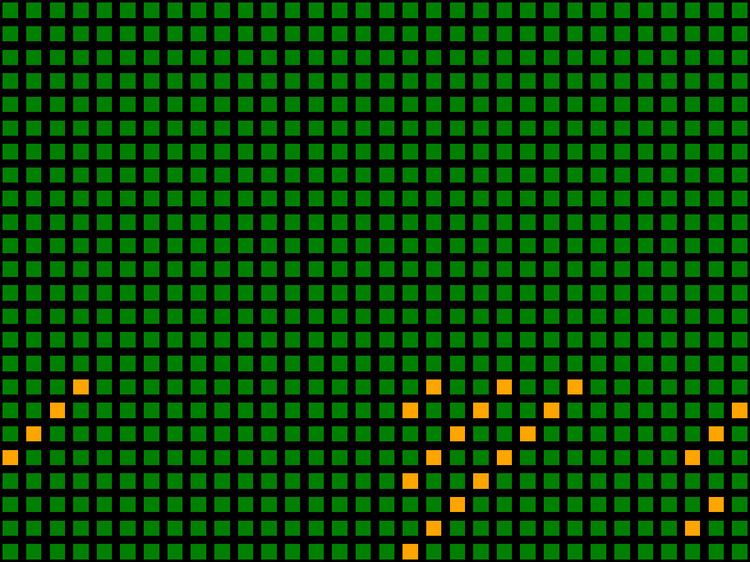 | ||
The Jenkins hash functions are a collection of (non-cryptographic) hash functions for multi-byte keys designed by Bob Jenkins. The first one was formally published in 1997.
Contents
one-at-a-time
Jenkins's one-at-a-time hash is adapted here from a WWW page by Bob Jenkins, which is an expanded version of his Dr. Dobbs article.
The avalanche behavior of this hash is shown on the right.
Each of the 24 rows corresponds to a single bit in the 3-byte input key, and each of the 32 columns corresponds to a bit in the output hash. Colors are chosen by how well the input key bit affects the given output hash bit: a green square indicates good mixing behavior, a yellow square weak mixing behavior, and red would indicate no mixing. Only a few bits in the last byte of the input key are weakly mixed to a minority of bits in the output hash.
The standard implementation of the Perl programming language includes Jenkins's one-at-a-time hash or a hardened variant of it, along with SipHash, and uses Jenkins's one-at-a-time hash by default.
lookup2
The lookup2 function was an interim successor to one-at-a-time. It is the function referred to as "My Hash" in the 1997 Dr. Dobbs journal article, though it has been obsoleted by subsequent functions that Jenkins has released. Applications of this hash function are found in:
lookup3
The lookup3 function consumes input in 12 byte (96 bit) chunks. It may be appropriate when speed is more important than simplicity. Note, though, that any speed improvement from the use of this hash is only likely to be useful for large keys, and that the increased complexity may also have speed consequences such as preventing an optimizing compiler from inlining the hash function.
SpookyHash
In 2011 Jenkins released a new 128-bit hash function called SpookyHash. SpookyHash is significantly faster than lookup3.
